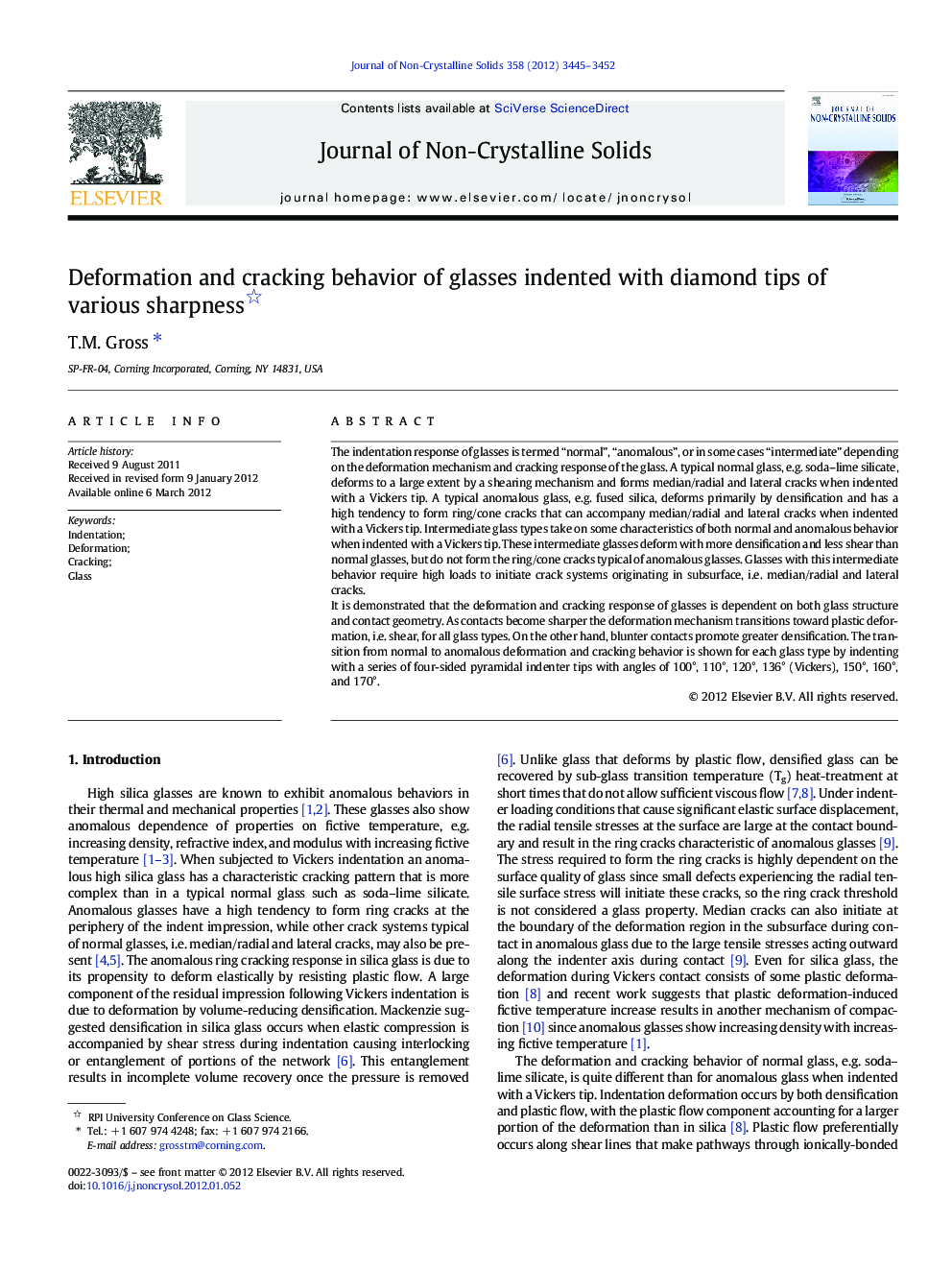| Article ID | Journal | Published Year | Pages | File Type |
|---|---|---|---|---|
| 1481490 | Journal of Non-Crystalline Solids | 2012 | 8 Pages |
The indentation response of glasses is termed “normal”, “anomalous”, or in some cases “intermediate” depending on the deformation mechanism and cracking response of the glass. A typical normal glass, e.g. soda–lime silicate, deforms to a large extent by a shearing mechanism and forms median/radial and lateral cracks when indented with a Vickers tip. A typical anomalous glass, e.g. fused silica, deforms primarily by densification and has a high tendency to form ring/cone cracks that can accompany median/radial and lateral cracks when indented with a Vickers tip. Intermediate glass types take on some characteristics of both normal and anomalous behavior when indented with a Vickers tip. These intermediate glasses deform with more densification and less shear than normal glasses, but do not form the ring/cone cracks typical of anomalous glasses. Glasses with this intermediate behavior require high loads to initiate crack systems originating in subsurface, i.e. median/radial and lateral cracks.It is demonstrated that the deformation and cracking response of glasses is dependent on both glass structure and contact geometry. As contacts become sharper the deformation mechanism transitions toward plastic deformation, i.e. shear, for all glass types. On the other hand, blunter contacts promote greater densification. The transition from normal to anomalous deformation and cracking behavior is shown for each glass type by indenting with a series of four-sided pyramidal indenter tips with angles of 100°, 110°, 120°, 136° (Vickers), 150°, 160°, and 170°.
